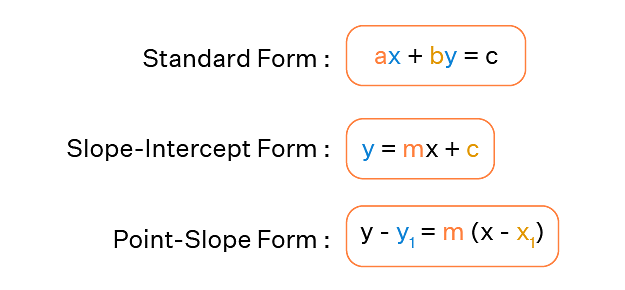The centroid of the triangle formed by joining the mid points of the sides of a triangle with vertices $ (-1,-1),(2,4) $ and $ (-5,-6) $ is
- $ \left( -\frac{2}{3},1 \right) $
- $ \left( -\frac{4}{3},-1 \right) $
- $ \left( -\frac{1}{3},\frac{1}{2} \right) $
- $ \left( -\frac{1}{4},\frac{1}{4} \right) $
The Correct Option is B
Solution and Explanation
Midpoint of \(AB=D\left( \frac{1}{2},\frac{3}{2} \right)\)
Midpoint of \(BC=E\left( -\frac{3}{2},-1 \right)\)
and mid point of
\(AC=F\left( -3,-\frac{7}{2} \right)\)
\(\Delta \,DEF\) is the triangle whose centroid is to be determined.
\(\therefore\) Centroid of \(\Delta \,\,DEF\)
is \(\left( \frac{\frac{1}{2}-3-\frac{3}{2}}{3},\frac{\frac{3}{2}-\frac{7}{2}-1}{3} \right)\)
\(=\left( \frac{1-6-3}{6},\frac{3-7-2}{6} \right)=\left( -\frac{4}{3},-1 \right)\)
Top Questions on Straight lines
- The vertices of a triangle are A(–1, 3), B(–2, 2) and C(3, –1). A new triangle is formed by shifting the sides of the triangle by one unit inwards. Then the equation of the side of the new triangle nearest to origin is :
- JEE Main - 2024
- Mathematics
- Straight lines
- If the sum of squares of all real values of \( \alpha \), for which the lines \( 2x - y + 3 = 0 \), \( 6x + 3y + 1 = 0 \) and \( \alpha x + 2y - 2 = 0 \) do not form a triangle \( p \), then the greatest integer less than or equal to \( p \) is ....
- JEE Main - 2024
- Mathematics
- Straight lines
- Which of the following cannot be the direction ratios of the straight line \(\frac{x - 3}{2} = \frac{2 - y}{3} = \frac{z + 4}{-1}\)?
- CUET (UG) - 2024
- Mathematics
- Straight lines
- A rectangle ABCD has its side parallel to the line y=2x and vertices A,B,D are on y=1,x=1 and x=-1 respectively. The coordinate of C can be
- WBJEE - 2023
- Mathematics
- Straight lines
- Ki are possible values of K for which lines \(Kx + 2y + 2 = 0\), \(2x + Ky + 3 = 0\), \(3x + 3y + K = 0\) are concurrent, then \(∑k_i\) has value.
- MHT CET - 2023
- Mathematics
- Straight lines
Questions Asked in JKCET exam
- A moving block having mass $m$, collides with another stationary block having mass $4\,m$. The lighter block comes to rest after collision. When the initial velocity of the lighter block is $v$, then the value of coefficient of restitution (e) will be
- JKCET - 2019
- work, energy and power
- A force $ F = 3x^2 + 2x + 1 $ acts on a body in the $ x $ -direction. The work done by this force during a displacement from $ x = -1 $ to $ +1 $ is
- JKCET - 2019
- work, energy and power
- What is the colour of the flame on heating potassium in the flame of a Bunsen burner?
- JKCET - 2019
- GROUP 1 ELEMENTS
- If $ a $ , $ b $ , $ c $ are the lengths of three edges of unit cell, $ \alpha $ is the angle between side $ b $ and $ c $ , $ \beta $ is the angle between side $ a $ and $ c $ and $ \gamma $ is the angle between side $ a $ and $ b $ , what is the Bravais Lattice dimensions of a tetragonal crystal?
- JKCET - 2019
- The solid state
- Which of the following compounds is known as copper glance?
- JKCET - 2019
- General Principles and Processes of Isolation of Elements
Concepts Used:
Straight lines
A straight line is a line having the shortest distance between two points.
A straight line can be represented as an equation in various forms, as show in the image below:

The following are the many forms of the equation of the line that are presented in straight line-
1. Slope – Point Form
Assume P0(x0, y0) is a fixed point on a non-vertical line L with m as its slope. If P (x, y) is an arbitrary point on L, then the point (x, y) lies on the line with slope m through the fixed point (x0, y0) if and only if its coordinates fulfil the equation below.
y – y0 = m (x – x0)
2. Two – Point Form
Let's look at the line. L crosses between two places. P1(x1, y1) and P2(x2, y2) are general points on L, while P (x, y) is a general point on L. As a result, the three points P1, P2, and P are collinear, and it becomes
The slope of P2P = The slope of P1P2 , i.e.
\(\frac{y-y_1}{x-x_1} = \frac{y_2-y_1}{x_2-x_1}\)
Hence, the equation becomes:
y - y1 =\( \frac{y_2-y_1}{x_2-x_1} (x-x1)\)
3. Slope-Intercept Form
Assume that a line L with slope m intersects the y-axis at a distance c from the origin, and that the distance c is referred to as the line L's y-intercept. As a result, the coordinates of the spot on the y-axis where the line intersects are (0, c). As a result, the slope of the line L is m, and it passes through a fixed point (0, c). The equation of the line L thus obtained from the slope – point form is given by
y – c =m( x - 0 )
As a result, the point (x, y) on the line with slope m and y-intercept c lies on the line, if and only if
y = m x +c



